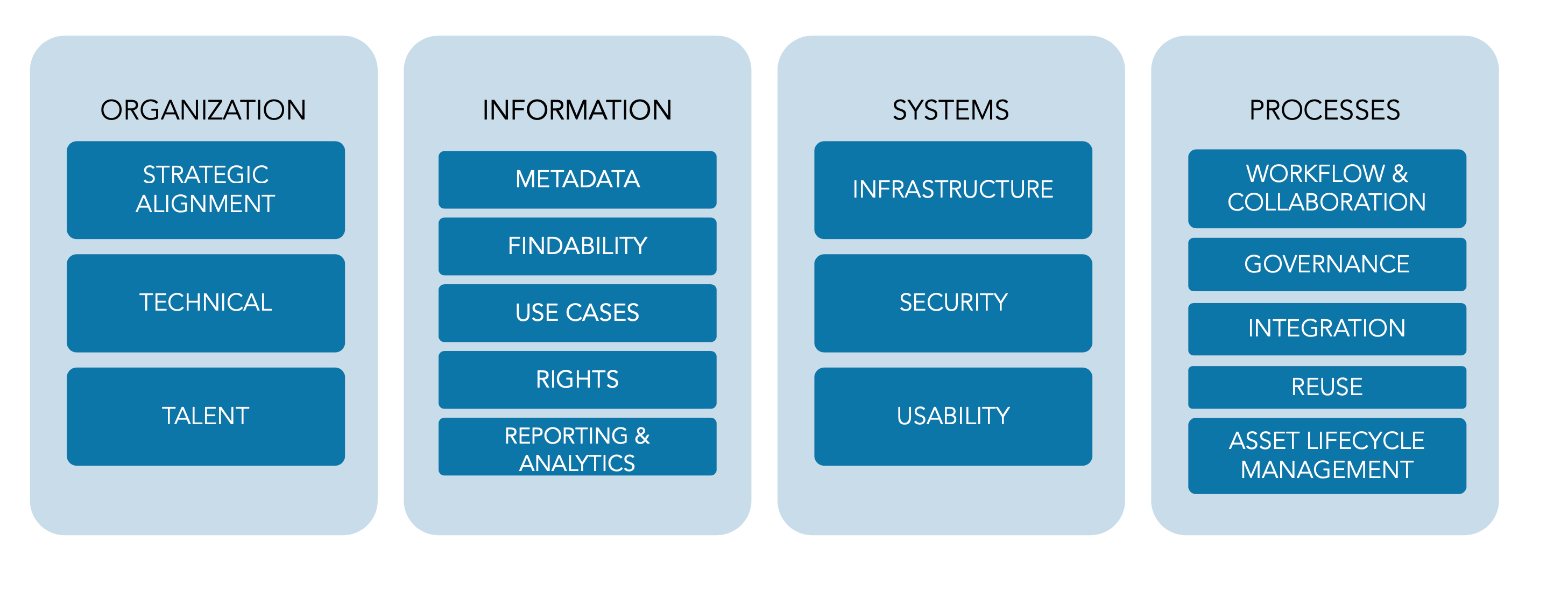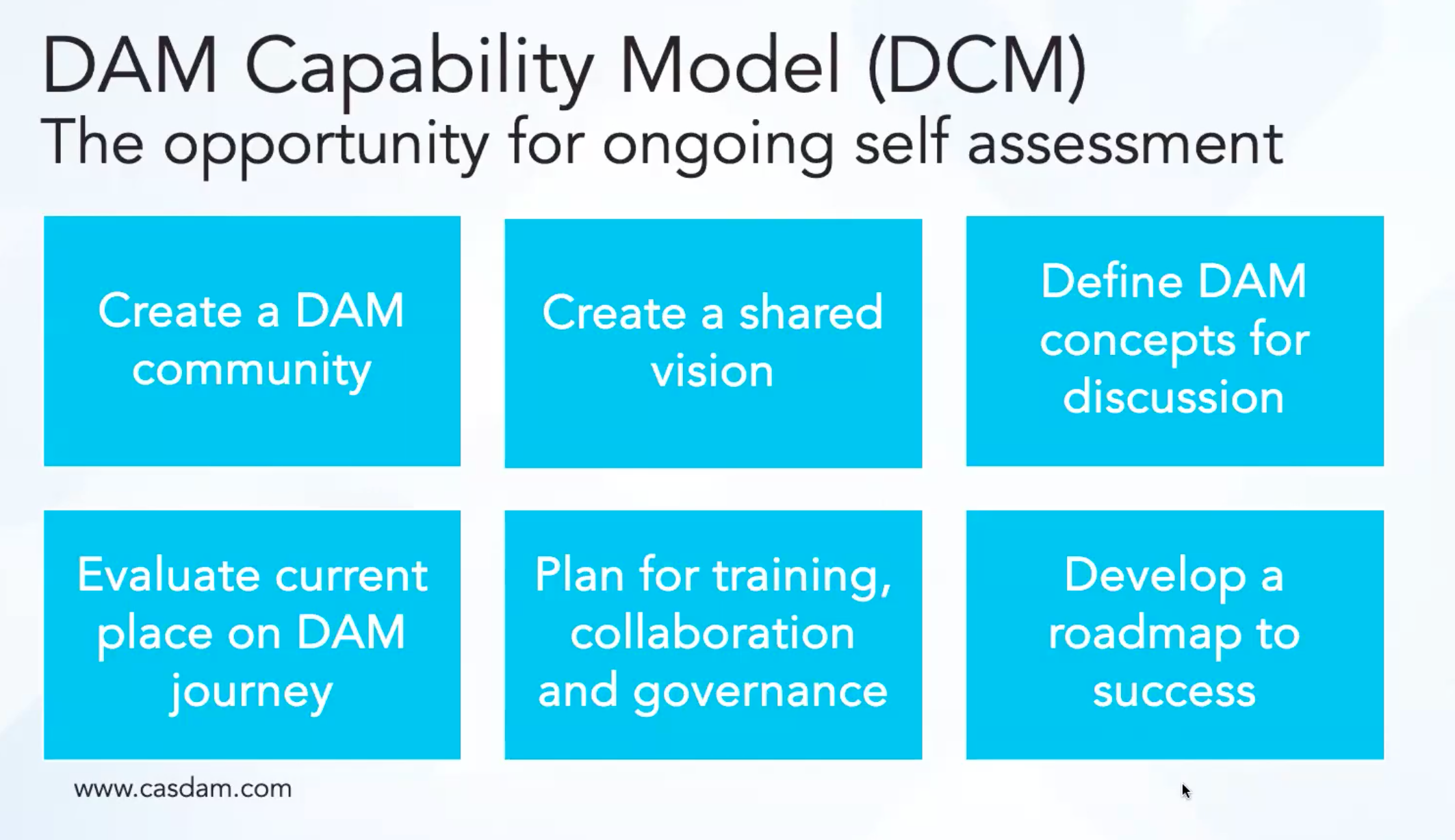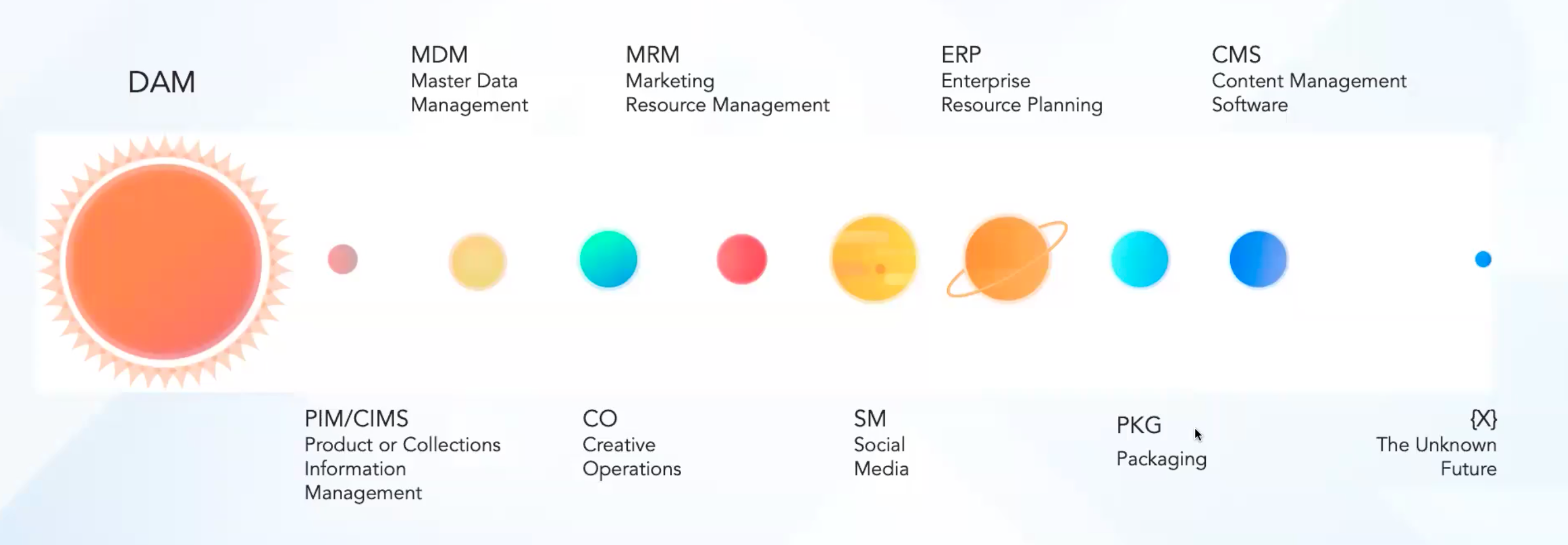Digital Asset Management (DAM) is essential for the efficient handling, organization, and retrieval of digital assets. At the forefront of advancing these capabilities is the DAM Capability Model, conceptualized by industry pioneer David Lipsey.
Since the inception of digital asset management in 1998, David Lipsey has been at the forefront. Working with organizations on a global level, David is considered the leading expert in the field.
This model has been instrumental in driving DAM adoption, growth, and innovation across organizations worldwide. The DAM Capability Model is the foundation of any DAM journey; whether you’re at beginner level or expert, the DAM Capability Model will enable you to elevate and future-ready your DAM skills.
In this detailed blog post, we explore the DAM Capability Model, its origins, practical applications, and the importance of community in fostering continuous improvement.
- What is the DAM Capability Model?
- The Centrality of DAM
- The Importance of Community in DAM
- How to Apply the DAM Capability Model
- The DAM Capability Model Workshop (Video)
This post is supplementary to the complimentary DAM Capability Model (available for download)! Read on to learn:
What is the DAM Capability Model?
The DAM Capability Model is a comprehensive framework designed to help organizations assess their current DAM practices and identify areas for enhancement. It serves as a roadmap for organizations at any stage of their DAM journey, from beginners to seasoned experts.
Categories of the DAM Capability Model
Organization: The “people” roles, responsibilities, technical know-how, strategic alignment and talent in an organization’s use and management of DAM
Information: The core material and related descriptors (such as metadata) that enable using an asset
Systems: The related components that work together to facilitate asset lifecycle
Processes: The repeatable set of procedures and operations designed to realize each stage of an asset’s lifecycle

Key Components of the DAM Capability Model:
Benchmarking: The model allows organizations to evaluate their current DAM capabilities, providing a clear picture of where they stand.
Structured Growth: It offers a structured approach to implementing changes, ensuring that DAM practices evolve in line with organizational goals.
Future-Readiness: By following the model, organizations can prepare for future challenges and technological advancements in the DAM space.

The Centrality of DAM
Over the past 25 years, DAM has evolved from a niche solution to a central pillar of modern organizational operations. The exponentially growing need for digital content across myriad platforms and channels has led to the crucial need for a robust system to manage these assets.
DAM systems serve as the central repository for all digital assets, ensuring that they are easily accessible, organized, and secure.
But, according to David Lipsey, a DAM is a crucial component of the digital landscape and critical to an organization, not just as a central repository. He has long emphasized the importance of placing DAM at the heart of an organization’s digital strategy.
“DAM does not sit in isolation.”
DAM plays a larger role in the broader ecosystem of digital operations. By centralizing DAM, organizations can:
- ensure digital assets are leveraged to their fullest potential,
- drive innovation and support strategic goals,
- streamline workflows, reduce redundancy, and
- enhance collaboration across departments.

This centralization not only improves efficiency but also ensures that brand consistency is maintained across all digital touchpoints, providing a cohesive and professional image to the audience.
Watch the DAM Capability Model Workshop with David Lipsey here.
Centralizing DAM Enables Continuous Improvement
The centrality of DAM fosters a culture of continuous improvement, as it provides the foundation upon which advanced analytics, personalized marketing, and dynamic content strategies are built.
In essence, DAM is not just a tool; it is the backbone of digital transformation, enabling organizations to thrive in an increasingly digital world.
Lipsey advocates for an ongoing commitment to refining DAM practices, ensuring they meet evolving business needs and technological advancements.
“Maturity in this field is never done. It’s always continual improvement in DAM.”
Continuous improvement is a cornerstone of effective DAM practices. Organizations must focus on maintaining and enhancing their DAM capabilities to ensure long-term success.
Strategies for Continuous Improvement:
Persistent ROI: Focus on achieving a persistent return on investment by regularly evaluating and optimizing DAM practices.
Documentation: Record opportunities and challenges to track progress and identify areas for enhancement. This practice helps maintain a record of what works and what needs adjustment.
Regular Reviews: Periodically review and update DAM practices to ensure they align with organizational goals and industry trends. This approach keeps DAM practices relevant and effective.
All of this brings us to one of Lipsey’s most valuable perspectives: working with and learning from the DAM community.
The Value of Community in DAM
Building and engaging with the DAM community is crucial for achieving sustained success. The collective knowledge and experience within the community provide invaluable resources for learning and improvement.
By fostering a sense of community, organizations can tap into a wealth of expertise, staying ahead of industry trends and implementing best practices. The DAM community is not just a network of professionals; it is a dynamic ecosystem where ideas are exchanged, challenges are discussed, and solutions are crafted collaboratively.
Community Benefits:
Collaboration: Engaging with other DAM practitioners fosters collaboration, allowing for the exchange of ideas and best practices. Through forums, webinars, and conferences, DAM professionals can connect with peers, sharing insights on successful strategies and innovative solutions.
This collaborative environment encourages creative problem-solving and helps organizations to implement more effective DAM practices. The shared goal of optimizing digital asset management brings together diverse perspectives, leading to the development of new methodologies and tools that benefit the entire community.
Support: The community offers support and guidance, helping organizations navigate challenges and capitalize on opportunities. Whether dealing with technical issues, policy changes, or strategic decisions, members of the DAM community can rely on each other for advice and assistance.
This support network is especially valuable for those new to DAM, providing mentorship and resources that accelerate learning and adoption. Experienced practitioners can offer practical solutions and reassurance, making the journey smoother and more manageable.
Learning: Shared experiences and insights contribute to a richer understanding of DAM, driving innovation and efficiency. By learning from the successes and failures of others, organizations can avoid common pitfalls and adopt proven practices.
The DAM community is a continuous learning environment where professionals can stay updated with the latest advancements and trends. Workshops, training sessions, and knowledge-sharing platforms provide opportunities for ongoing education, ensuring that DAM practitioners are always equipped with the latest skills and knowledge.
Moreover, the community plays a pivotal role in shaping the future of DAM. Active participation in discussions and collaborative projects can influence the development of new standards, tools, and technologies. By contributing to the collective knowledge base, organizations not only benefit themselves but also help to advance the entire field of digital asset management.
Practical Applications of the DAM Capability Model
The DAM Capability Model is a powerful tool for driving adoption and growth within organizations. Here are some practical applications on how to use it to your advantage:
Onboarding New Departments: Integrate DAM into new departments’ workflows, ensuring consistency and efficiency across the organization. This process involves educating teams on DAM best practices and demonstrating the value of centralized asset management.
Mapping DAM Usage: Conduct a comprehensive mapping of current DAM usage to identify strengths and areas for improvement. This exercise helps uncover gaps and opportunities for expanding DAM capabilities.
Engaging with Legal and Risk Management: Collaborate with legal and risk management teams to ensure compliance with regulations and prepare for disaster recovery scenarios. This integration helps safeguard digital assets and mitigate risks.
Engaging with the DAM Capability Model
To effectively leverage the DAM Capability Model, organizations should follow these steps:
- Cross-Functional Involvement: Involve teams from various departments in the assessment and implementation process. This holistic approach ensures that all perspectives are considered and that DAM practices are integrated seamlessly across the organization.
- Resource Utilization: Take advantage of resources such as the Center for Advanced Studies in Digital Asset Management and Henry Stewart conferences for further learning and community engagement. These resources offer valuable insights and opportunities for professional development.
Steps to Get Started:
- Download the DAM Capability Model: Access the complimentary model to begin your journey.
- Conduct an Assessment: Evaluate your current DAM practices using the model as a benchmark.
- Develop an Action Plan: Create a roadmap for implementing necessary changes and improvements.
- Engage with the Community: Participate in DAM forums, webinars, and conferences to stay informed and connected.
Watch the DAM Capability Model Webinar
Are you interested in hearing from David Lipsey himself? To learn more about the DAM Capability Model you can watch our on-demand webinar right here.
This session offers in-depth insights, practical examples and best practices for you to follow! Watch it here.
Related Articles
Ready to see what the DAM hype’s about?
Meet with one of our product experts




